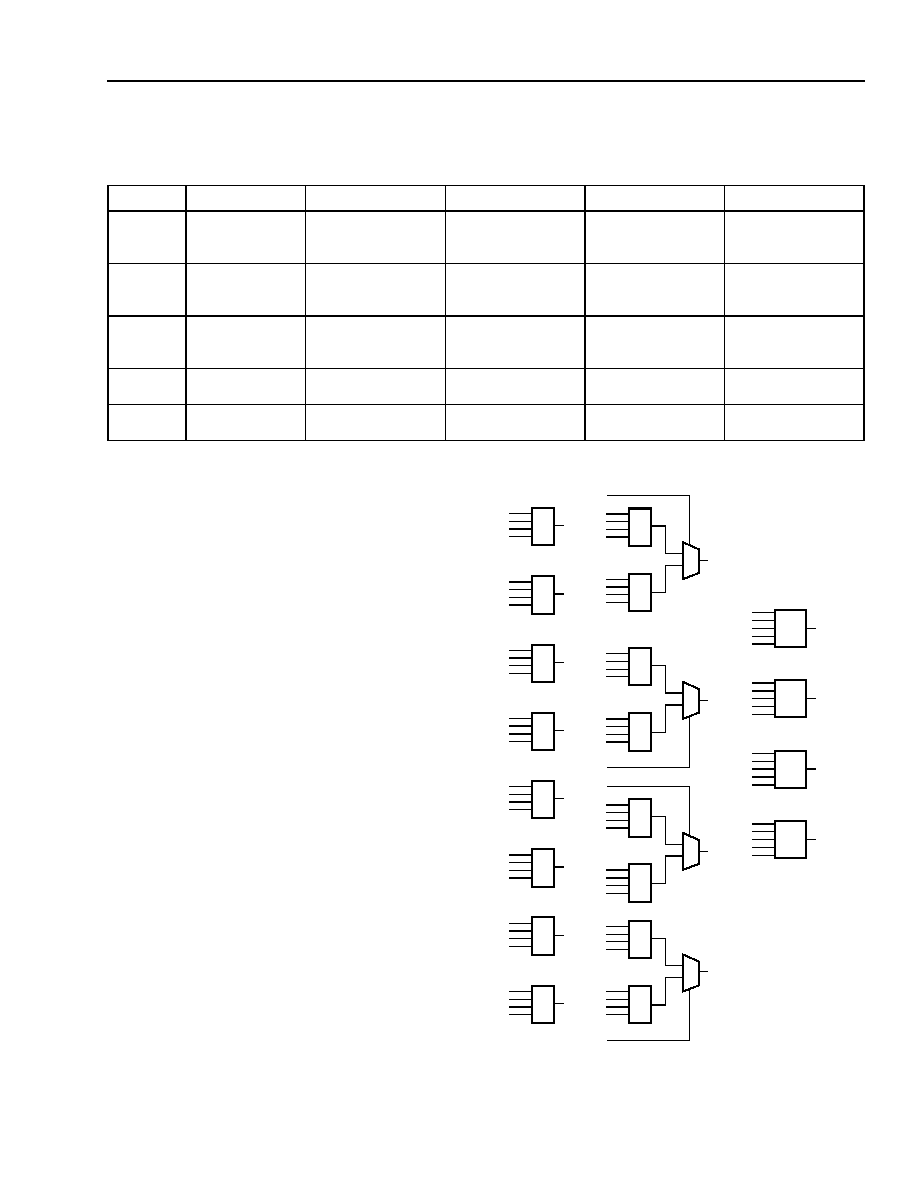- 您現(xiàn)在的位置:買賣IC網(wǎng) > PDF目錄299576 > OR3T165-4PS240 FPGA, 1024 CLBS, 120000 GATES, PQFP240 PDF資料下載
參數(shù)資料
| 型號: | OR3T165-4PS240 |
| 元件分類: | FPGA |
| 英文描述: | FPGA, 1024 CLBS, 120000 GATES, PQFP240 |
| 封裝: | SQFP-240 |
| 文件頁數(shù): | 13/210頁 |
| 文件大小: | 2138K |
| 代理商: | OR3T165-4PS240 |
第1頁第2頁第3頁第4頁第5頁第6頁第7頁第8頁第9頁第10頁第11頁第12頁當前第13頁第14頁第15頁第16頁第17頁第18頁第19頁第20頁第21頁第22頁第23頁第24頁第25頁第26頁第27頁第28頁第29頁第30頁第31頁第32頁第33頁第34頁第35頁第36頁第37頁第38頁第39頁第40頁第41頁第42頁第43頁第44頁第45頁第46頁第47頁第48頁第49頁第50頁第51頁第52頁第53頁第54頁第55頁第56頁第57頁第58頁第59頁第60頁第61頁第62頁第63頁第64頁第65頁第66頁第67頁第68頁第69頁第70頁第71頁第72頁第73頁第74頁第75頁第76頁第77頁第78頁第79頁第80頁第81頁第82頁第83頁第84頁第85頁第86頁第87頁第88頁第89頁第90頁第91頁第92頁第93頁第94頁第95頁第96頁第97頁第98頁第99頁第100頁第101頁第102頁第103頁第104頁第105頁第106頁第107頁第108頁第109頁第110頁第111頁第112頁第113頁第114頁第115頁第116頁第117頁第118頁第119頁第120頁第121頁第122頁第123頁第124頁第125頁第126頁第127頁第128頁第129頁第130頁第131頁第132頁第133頁第134頁第135頁第136頁第137頁第138頁第139頁第140頁第141頁第142頁第143頁第144頁第145頁第146頁第147頁第148頁第149頁第150頁第151頁第152頁第153頁第154頁第155頁第156頁第157頁第158頁第159頁第160頁第161頁第162頁第163頁第164頁第165頁第166頁第167頁第168頁第169頁第170頁第171頁第172頁第173頁第174頁第175頁第176頁第177頁第178頁第179頁第180頁第181頁第182頁第183頁第184頁第185頁第186頁第187頁第188頁第189頁第190頁第191頁第192頁第193頁第194頁第195頁第196頁第197頁第198頁第199頁第200頁第201頁第202頁第203頁第204頁第205頁第206頁第207頁第208頁第209頁第210頁

Lucent Technologies Inc.
11
Preliminary Data Sheet, Rev. 1
September 1998
ORCA Series 3 FPGAs
Programmable Logic Cells (continued)
Table 4. Control Input Functionality
Mode
CLK
LSR
CE
ASWE
SEL
Logic
CLK to all latches/
FFs
LSR to all latches/
FFs, enabled per nib-
ble and for ninth FF
CE to all latches/FFs,
selectable per nibble
and for ninth FF
CE to all latches/FFs,
selectable per nibble
and for ninth FF
Select between LUT
input and direct input
for eight latches/FFs
Half Logic/
Half Ripple
CLK to all latches/
FFs
LSR to all latches/FF,
enabled per nibble
and for ninth FF
CE to all latches/FFs,
selectable per nibble
and for ninth FF
Ripple logic control
input
Select between LUT
input and direct input
for eight latches/FFs
Ripple
CLK to all latches/
FFs
LSR to all latches/
FFs, enabled per nib-
ble and for ninth FF
CE to all latches/FFs,
selectable per nibble
and for ninth FF
Ripple logic control
input
Select between LUT
input and direct input
for eight latches/FFs
Memory
(RAM)
CLK to RAM
Port enable 2
Port enable 1
Write enable
Not used
Memory
(ROM)
Optional for sync.
outputs
Not used
Logic Mode
The PFU diagram of Figure 3 represents the logic
mode of operation. In logic mode, the eight LUTs are
used individually or in flexible groups to implement user
logic functions. The latches/FFs may be used in con-
junction with the LUTs or separately with the direct PFU
data inputs. There are three basic submodes of LUT
operation in PFU logic mode: F4 mode, F5 mode, and
softwired LUT (SWL) mode. Combinations of these
submodes are possible in each PFU.
F4 mode, shown simplified in Figure 4, illustrates the
uses of the basic 4-input LUTs in the PFU. The output
of an F4 LUT can be passed out of the PFU, captured
at the LUTs associated latch/FF, or multiplexed with the
adjacent F4 LUT output using one of the F5[A:D] inputs
to the PFU. Only adjacent LUT pairs (K0 and K1, K2
and K3, K4 and K5, K6 and K7) can be multiplexed, and
the output always goes to the even-numbered output of
the pair.
The F5 submode of the LUT operation, shown simpli-
fied in Figure 4, indicates the use of 5-input LUTs to
implement logic. 5-input LUTs are created from two
4-input LUTs and a multiplexer. The F5 LUT is the
same as the multiplexing of two F4 LUTs described
previously with the constraint that the inputs to the F4
LUTs be the same. The F5[A:D] input is then used as
the fifth LUT input. The equations for the two F4 LUTs
will differ by the assumed value for the F5[A:D] input,
one F4 LUT assuming that the F5[A:D] input is zero,
and the other assuming it is a one. The selection of the
appropriate F4 LUT output in the F5 MUX by the
F5[A:D] signal creates a 5-input LUT. Any combination
of F4 and F5 LUTs is allowed per PFU using the eight
16-bit LUTs. Examples are eight F4 LUTs, four F5
LUTs, and a combination of four F4 plus two F5 LUTs.
Figure 4. Simplified F4 and F5 Logic Modes
K7
F7
K7
F6
K6
F5D
K6
F6
K5
F5
K5
F4
K4
F5C
K4
F4
K3
F3
K3
F2
K2
F5B
K2
F2
K1
F1
K1
F0
K0
F5A
K0
F0
K7/K6
F6
K5/K4
F4
K3/K2
F2
K1/K0
F0
F5 MODE
MULTIPLEXED F4 MODE
F4 MODE
5-5970(F)
相關(guān)PDF資料 |
PDF描述 |
|---|---|
| OR3T165-5B432 | FPGA, 1024 CLBS, 120000 GATES, PBGA432 |
| OR3T165-5B600 | FPGA, 1024 CLBS, 120000 GATES, PBGA600 |
| OR3T165-5BA352I | FPGA, 1024 CLBS, 120000 GATES, PBGA352 |
| OR3T165-5BA352 | FPGA, 1024 CLBS, 120000 GATES, PBGA352 |
| OR3T165-5BC432I | FPGA, 1024 CLBS, 120000 GATES, PBGA432 |
相關(guān)代理商/技術(shù)參數(shù) |
參數(shù)描述 |
|---|---|
| OR3T20 | 制造商:AGERE 制造商全稱:AGERE 功能描述:3C and 3T Field-Programmable Gate Arrays |
| OR3T20-4BA256I | 制造商:未知廠家 制造商全稱:未知廠家 功能描述:Field Programmable Gate Array (FPGA) |
| OR3T20-4S208I | 制造商:未知廠家 制造商全稱:未知廠家 功能描述:Field Programmable Gate Array (FPGA) |
| OR3T20-4S240I | 制造商:未知廠家 制造商全稱:未知廠家 功能描述:Field Programmable Gate Array (FPGA) |
| OR3T20-5BA256 | 制造商:AGERE 制造商全稱:AGERE 功能描述:3C and 3T Field-Programmable Gate Arrays |
發(fā)布緊急采購,3分鐘左右您將得到回復。